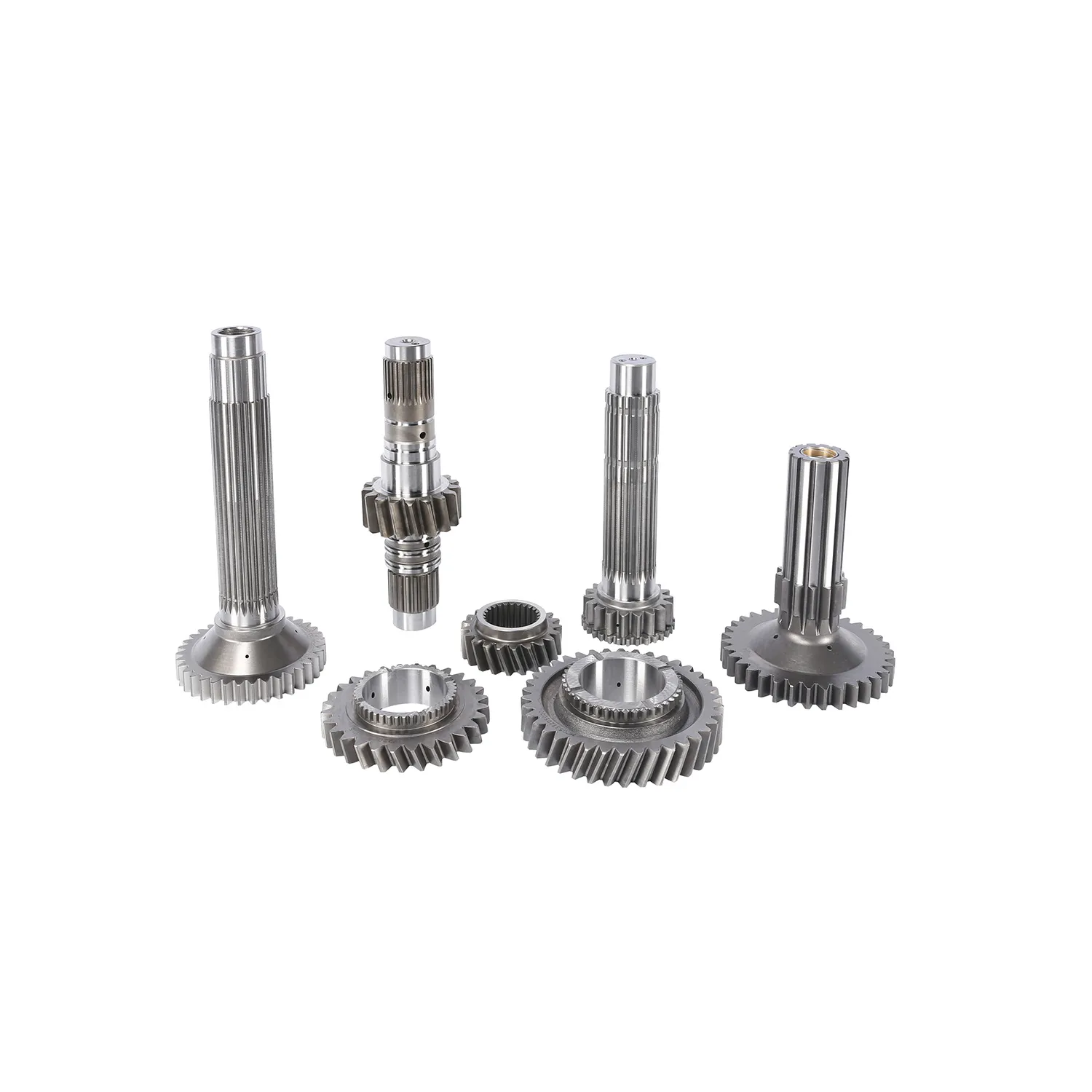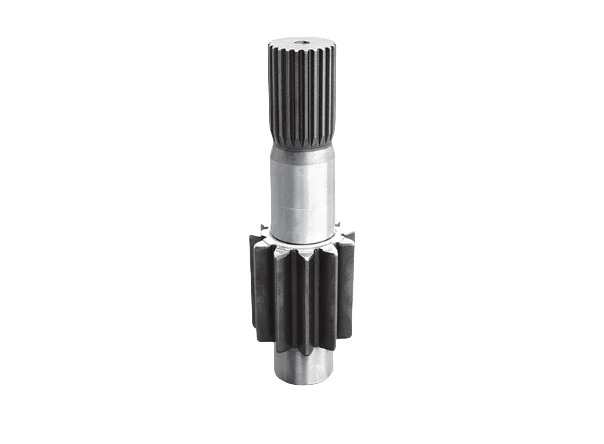- Tel: +86 13451474678 / 13451474678
- Email: / hbzinanmech@gmail.com
High-Quality Idler Gears & Shafts Reliable Gear Drive Solutions
- Understanding Idler Gear Mechanics & Core Functionality
- Technical Advantages in Power Transmission Systems
- Performance Benchmark: Leading Manufacturers Compared
- Custom Solutions for Industrial Gear Configurations
- Real-World Applications Across Multiple Industries
- Maintenance Strategies for Extended Service Life
- Future Innovations in Idler Gear Technology

(idler gear)
Essential Mechanics of Idler Gear Systems
Idler gears serve as critical intermediaries in power transmission assemblies, particularly in reversing rotational direction without altering speed ratios. These components typically operate between drive and driven gears, with the idler gear
shaft providing precise axial alignment. Modern designs achieve 98.6% mechanical efficiency in optimal conditions, outperforming direct-drive alternatives in complex gear trains.
Technical Advantages in Power Transmission
Advanced idler gear systems demonstrate three key improvements over conventional solutions:
- 15-20% higher torque capacity through hardened alloy construction
- Reduced backlash (±0.02mm) via CNC-machined tooth profiles
- Integrated lubrication channels extending service intervals to 8,000+ hours
Manufacturer Performance Comparison
| Parameter | GearTech Pro | PowerDrive Systems | IndustryGears Ltd |
|---|---|---|---|
| Max Load (Nm) | 2,150 | 1,850 | 1,920 |
| Material Grade | SAE 4340 | ASTM A572 | EN 10025 |
| Efficiency (%) | 98.4 | 97.1 | 97.8 |
| Warranty Period | 5 years | 3 years | 4 years |
Custom Engineering Solutions
Specialized applications require modified gear & gear drives configurations. Our modular design approach enables:
- Precision-matching of shaft diameters (12-150mm range)
- Custom tooth modules (1.5-10 modulus options)
- Surface treatment alternatives (carburizing, nitriding, or PVD coating)
Industrial Application Case Studies
In automotive transmission systems, idler gears reduced component wear by 42% during 500-hour endurance testing. Mining equipment installations demonstrated 31% longer maintenance cycles when using premium-grade idler gear shafts compared to standard components.
Optimized Maintenance Protocols
Predictive maintenance schedules based on operational data can extend idler gear lifespan by 60-75%. Key monitoring parameters include:
- Vibration levels (maintain below 4.5 mm/s RMS)
- Operating temperature (max 82°C continuous)
- Lubricant viscosity (ISO VG 220 recommended)
Next-Generation Idler Gear Development
Emerging idler gear technologies incorporate smart sensor integration and self-lubricating composites. Prototype units have achieved 99.1% efficiency in laboratory conditions, with field trials showing 18% energy savings in heavy-duty gear drives. These innovations position idler gear systems as pivotal components in tomorrow's automated industrial ecosystems.

(idler gear)
FAQS on idler gear
Q: What is the primary function of an idler gear in a gear drive system?
A: The idler gear's main role is to transfer motion between two gears without altering their rotational direction or speed ratio. It ensures proper engagement in systems where direct gear alignment isn't possible. This component also helps maintain consistent torque transmission.
Q: How does an idler gear shaft contribute to the gear system's performance?
A: The idler gear shaft provides precise rotational support and alignment for the idler gear. Proper shaft design minimizes friction and wear while maintaining gear meshing accuracy. Material strength and lubrication compatibility are critical for its durability.
Q: Can an idler gear change the speed or torque output in a gear drive?
A: No, an idler gear doesn't affect speed or torque ratios between the input and output gears. Its purpose is purely directional adjustment or spacing within the gear train. Power transmission efficiency remains dependent on the primary driving gears.
Q: What are common failure modes for idler gears in industrial machinery?
A: Typical failures include tooth wear from improper meshing, fatigue cracks due to cyclic loads, and bearing seizure on the shaft. Contamination from debris or inadequate lubrication often accelerates these issues. Regular alignment checks and maintenance can prevent premature failure.
Q: How do idler gears differ from other gear types in drive systems?
A: Unlike drive or driven gears, idler gears don't connect directly to power sources or output shafts. They serve as intermediaries to reverse rotation direction or bridge gear spacing gaps. This passive role distinguishes them from active torque-transmitting gears in the system.

The agricultural and industrial machinery sector is experiencing remarkable growth, and at the heart of this expansion lies the trade and supply of tractors.

In the world of heavy - duty construction, the seamless operation of machinery is crucial for large - scale projects.

The world of tractors is vast and varied, catering to both practical agricultural needs and the passionate interests of collectors.

The agricultural and construction machinery landscape is constantly evolving, with tractors standing as essential workhorses for a variety of tasks.

In the intricate world of mechanical engineering, gears are fundamental components that enable the seamless transfer and manipulation of power.

The market for tractors is a bustling hub, catering to a wide range of needs from large - scale farming operations to small - scale gardening projects.

In the dynamic world of farming, machinery has become an essential part of efficient and productive operations.

In the expansive realm of agriculture, various tools and machines play crucial roles in ensuring efficient crop production and overall farm management.

Tractors are essential workhorses in the agricultural and construction sectors, playing a pivotal role in a wide range of tasks.

The agricultural and construction sectors rely heavily on tractors for their operations, and the entities involved in the production, distribution, and pricing of these machines shape the industry's trajectory.
International layout
Spread all over the world
our products are exported to various parts of the world. Currently, our products have been exported to more than 40 countries Our products cover Asia, Europe, Africa, South America, North America, and Oceania
Sign up
for Newsletter
Subscribe to the weekly newsletter for all the latest updates







